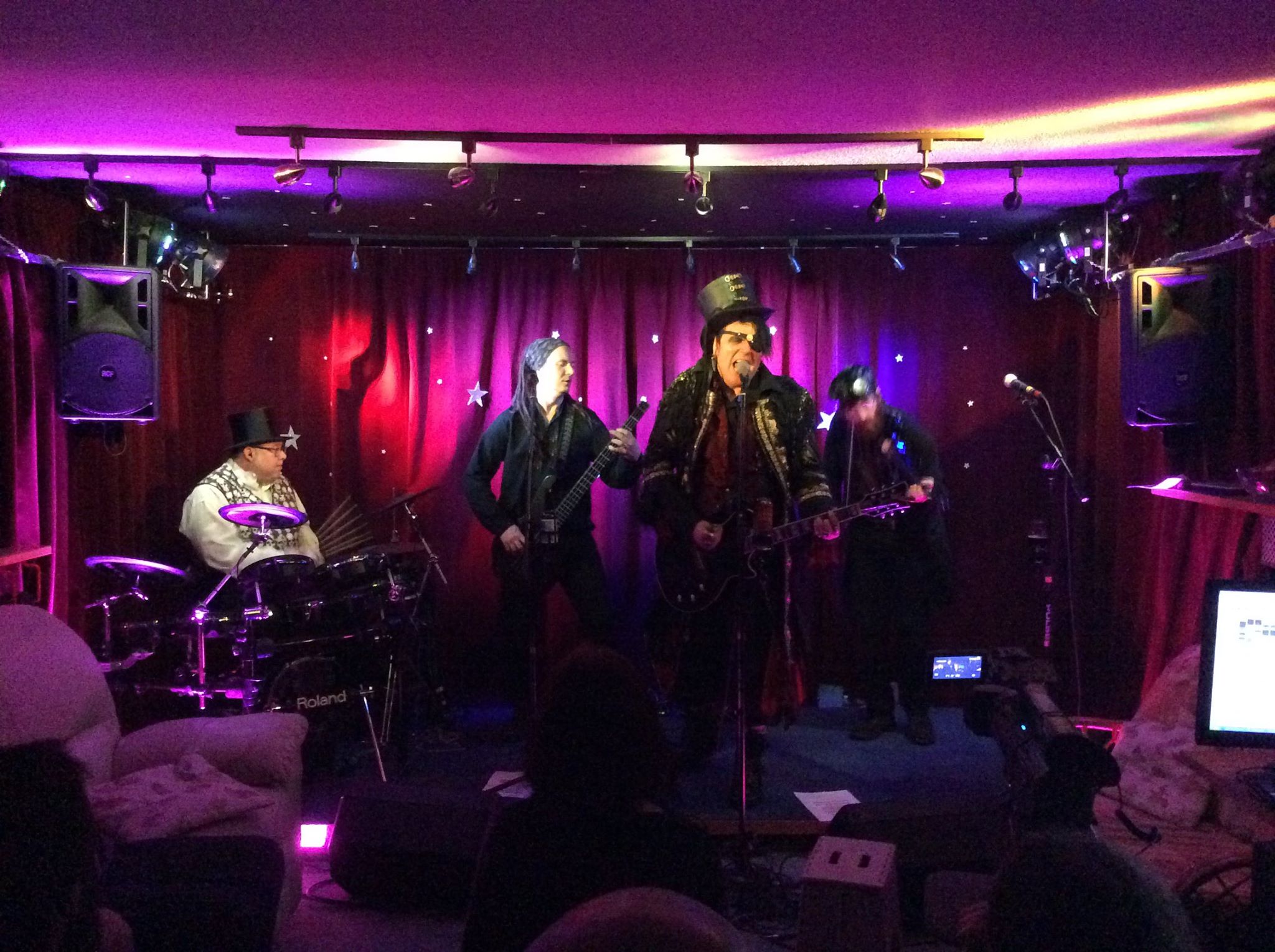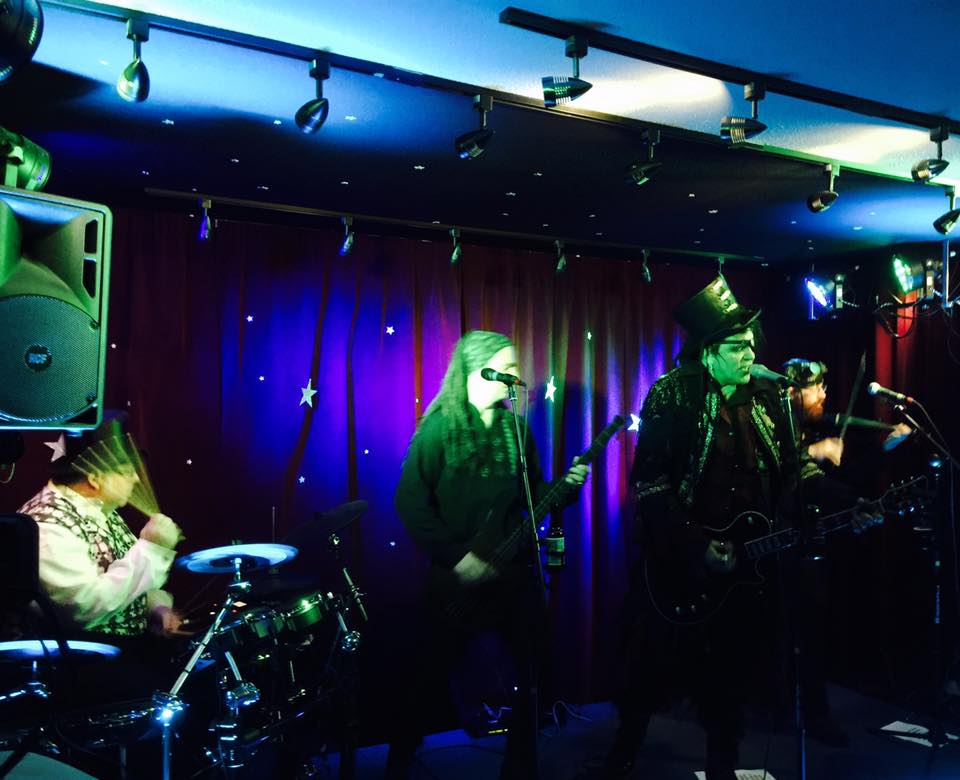So tomorrow is International Women’s Day I believe (it was much easier to be certain when I worked in Oxfam headquarters). And Saturday’s job was an early commemoration of the date, bumping an amateur orchestra (Harmony Sinfonia) viola section for a concert celebrating women in music – female conductor, female soloist, female composers.
I somewhat wonder if the conductor and soloist were more the preconditions that prompted the concert theme than a result of it. Certainly it is not that uncommon for classical flute soloists to be female today – in fact I suspect the gender balance is the other way (there are plenty of other instruments that sadly make up an overall patriarchy of solo performers though). And it’s a curious but objectively observable phenomenon that female conductors of professional orchestras are very rare, but female conductors of amateur ones not particularly uncommon. When I play a concert where everyone is being paid and the conductor is a woman, I’ll write about the directing at much greater length.
However, the main point being made here was being made by the choice of repertoire. And, to start with something a bit counterintuitive, part of that point resided in four out of the five featured composers being dead.
You see, there is a tendency to assume that art music has emerged within the past half-century or less from a total male dominance to a relative but still incomplete gender equality. Now there is a certain amount of truth contained within that assumption – when Rebecca Clarke was hired as a violist by Henry Wood in 1912, she was one of the first (some tellers of the story say the first) female professional orchestral musicians in the UK. And, returning to the compositional sphere and looking at the other end of the binary opposition, it is certainly true that the profile of women composers is higher now than it ever has been. But this does not mean that that situation sprang fully armed from the forehead of Zeus somewhere round about the time the pill became available, male homosexual activity was decriminalised and ‘Please Please Me’ hit the charts.
The main work of the evening, Amy Beach’s ‘Gaelic’ Symphony, and Cecile Chaminade’s Concertino for Flute, were both written before the first world war. The other two substantial works on the programme were Nancy Dalberg’s Capriccio (1918) and Grace Williams’ Penillion (1955), leaving as the only representative of the postmodern era or of a living composer two movements from Debbie Wiseman’s suite for the current queen’s 90th birthday celebrations.
(A word on names – I am adding the first names not in order to emphasise these composers’ gender or to implicitly belittle them by less formal reference, but purely because they are not household names and so it would be unwise to assume knowledge of who they are.)
But of course the real question is not the history of the works but their musical quality.
I would not presume to claim that I know the core orchestral repertoire inside out – especially given there are (at least) three parts I might play in any normal orchestral scoring, and that my theory / musicology knowledge could be greater. But it is also true that a relatively confined canon makes up the overwhelming majority of music performed by orchestras, especially if you look at amateur as well as professional performances. And it is a long-term opinion of mine that this denies audiences and players the chance to experience a lot of music that is very nearly as good, or even as good, as that canon but simply less well-known.
I would put the vast majority of this concert in that category. The Beach, for starters, is a fully-fledged and ambitiously conceived late Romantic symphony, both of its time and in some ways highly distinctive. It is also, despite being not vastly long for the period (though it dwarfs anything Classical in length), a very hard play for the strings in particular – performing it on one rehearsal kept us hired extras on our toes! It certainly deserves a place in programming fully Romantic symphonies alongside Brahms, Dvorak (an audible influence) et al, and represents an all too rare example of durable indigenously American composition from before the arrival of Modernism.
The Chaminade (I am working roughly chronologically) originated as a contest piece with strict constraints. As such it fits a lot of flute technique into a short span (a single movement under ten minutes). It is expressive and enjoyable, but not particularly heavyweight. Accessible and melodic however, it would work well as a concert opener in place of the usual overture, particularly where (as on this occasion) an orchestra’s principal flautist is able to tackle it, rather than bringing in an outside soloist for something that is not really a concerto.
Nancy Dalberg’s Capriccio wears its time and place (northern Europe in the early 20th century) fairly clearly on its sleeve, though it is broadly tonal and on the less aggressive end of modernism – the main influence is probably Neilsen, who taught Dalberg composition for some time. Nonetheless it is punchy, full of contrast, range and energy, exhilarating (especially if taken at the full indicated speed, which thankfully was reduced a little for this performance, given the acres of chromatic motor-rhythm quavers in 6/4 time that flesh out the climaxes in the inner string parts). Possibly the least ‘accessible’ of the pieces we played, I nonetheless thought this was a great experience if you have the context of Nielsen, Stravinsky etc. to place it within, and at under ten minutes again could easily be paired with less intense works for purposes of keeping a generalist audience engaged.
Grace Williams’ Penillion I found fascinating. As the name implies, Williams was Welsh, and she was partly mentored by co-nationalist Ralph Vaughan Williams (I believe no relation), also being part of a female compositional circle with Imogen Holst (daughter of Gustav). This four-movement tone poem uses folk song-like melodies and touches of modalism, with great atmosphere, free-flowing phrases that escape regular metre, and a lightly-worn awareness of what high modernism had done a generation earlier. If the last movement – all ‘renaissance’ compound time dance rhythms and flirtations with the Dorian mode – was in danger of becoming musically insubstantial, somewhere between Peter Warlock and Hans Zimmer, it at least resolved the yearning of the slower movements and the dangerous-sounding, barely contained chromatic energy of the second. Certainly the piece of the evening I would most like to hear, and play, again (though this may say something about my relationship to the late Romantic and Modern periods, or indeed about how much melody the violas get to play in the third movement).
The odd one out, I felt, of the programme was the two Wiseman movements. I gather from one of the orchestra that the composer was consulted on the choice from among her works, and I wonder if the rest of the programme had not been fixed or was not communicated. Certainly these seemed, in the context of the rest of the music, like an overreaction to the expected abilities of an amateur orchestra and musical understanding of their audience. Everything I would expect from a British royal celebration commission, they were rather like Walton coronation music on a low-fat diet. Is it too much, I wonder, to imply that by this date, being a woman in composition may constitute an advantage (particularly in gaining commissions for the birthday of a queen), whereas Beach, Chaminade, Dalberg and Williams were all very aware of having to be twice as good to be respected half as much (the phenomenon of male condescending surprise at the composer’s sex occurs in the nineteenth-century biographies at least)? Probably so – I should in fairness respect my own theory and discover what Wiseman’s music for less functionally and traditionally constrained purposes is like first.
My main takeaway lesson from this concert would remain that researching previously unknown compositions and composers is effort on performers’ and organisers’ part that would be well rewarded. A nearly full house for this concert illustrates that audiences do not always want to be played ‘something what we know’. And it is a sad but undeniable truth that no woman composer later than Hildegard of Bingen but earlier than about Rebecca Clarke has a solid place in the canon – and neither of those wrote for orchestra. Let us have a little daring. The surface must barely have been scratched of no longer played art music that would be a refreshing change – and the motivation of curiosity might even actually attract more attention than going to hear a programme you could almost certainly replicate out of professional recordings you already own.

